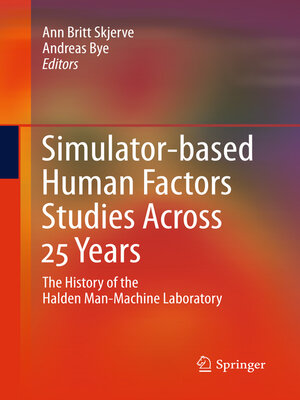Simulator-based Human Factors Studies Across 25 Years
ebook ∣ The History of the Halden Man-Machine Laboratory
By Ann Britt Skjerve

Sign up to save your library
With an OverDrive account, you can save your favorite libraries for at-a-glance information about availability. Find out more about OverDrive accounts.
Find this title in Libby, the library reading app by OverDrive.



Search for a digital library with this title
Title found at these libraries:
| Library Name | Distance |
|---|---|
| Loading... |
The Halden Man-Machine Laboratory (HAMMLAB) has been at the heart of human factors research at the OECD Halden Reactor Project (HRP). The HRP is sponsored by a group of national organizations, representing nuclear power plant regulators, utilities, and research institutions. The HRP is hosted by the Institute for Energy Technology (IFE) in Halden, Norway. HAMMLAB comprises three full-scale nuclear power plant control room research simulators. The simulator studies performed in HAMMLAB have traditionally been experimental in nature. In a simulator it is possible to study events as they unfold in real time, in a highly realistic operational environment under partially controlled conditions. This means that a wide range of human factors issues, which would be impossible or highly impracticable to study in real-life settings, can thus be addressed in HAMMLAB. Simulator-based Human Factors Studies Across 25 Years celebrates the twenty-fifth anniversary of HAMMLAB by reviewing the human factors studies performed in HAMMLAB across this time-span. A range of human factors issues have been addressed, including:
human-system interfaces;
alarm systems;
computerized procedures;
human-automation interaction;
staffing, teamwork and human reliability. The aim of HAMMLAB studies has always been the same: to generate knowledge for solving current and future challenges in nuclear power plant operation to contribute to safety. The outcomes of HAMMLAB studies have been used to support design and assessment of nuclear power plant control rooms.







